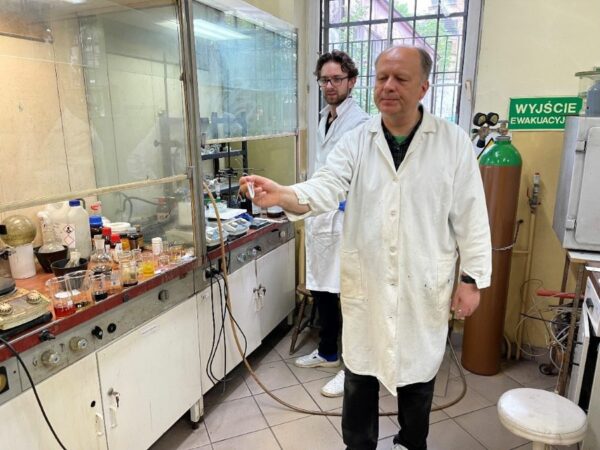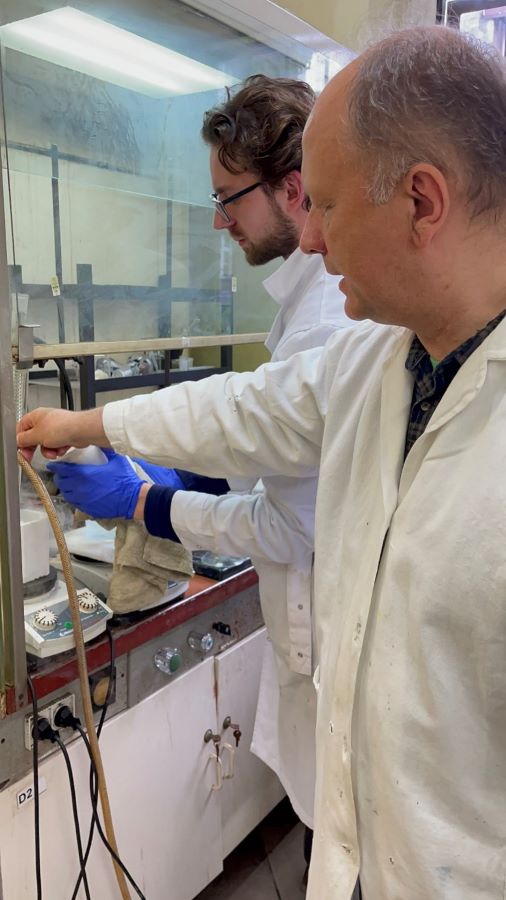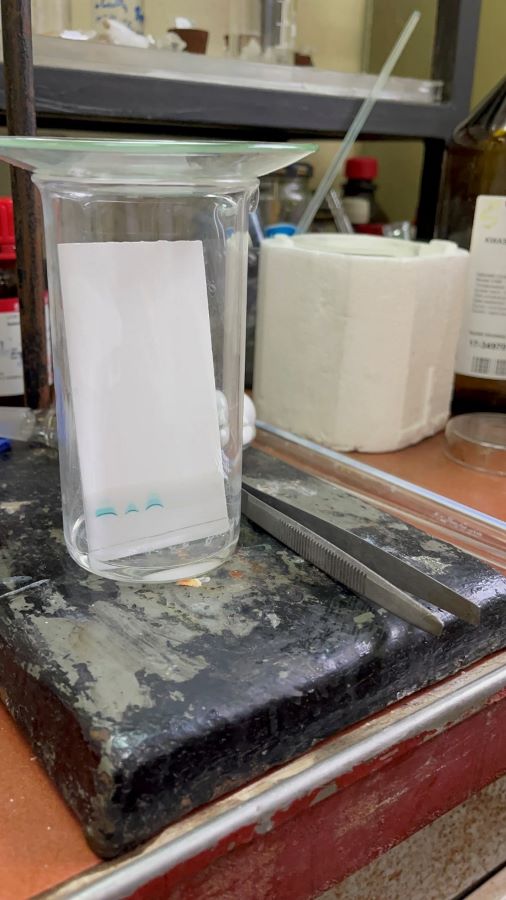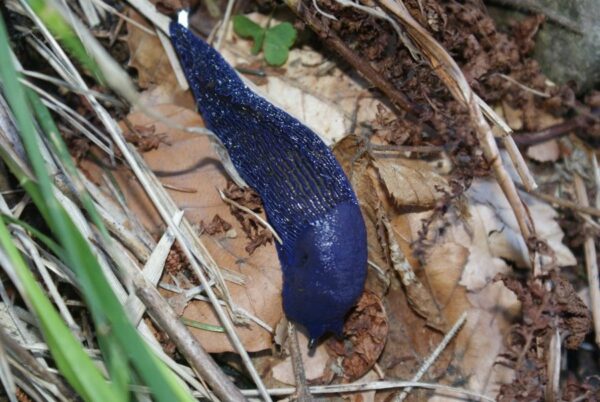RESEARCH EXCELLENCE INITIATIVE
FREEDOM OF RESEARCH – SCIENCE FOR THE FUTURE
‘Freedom of research – science for the future’ series consists of articles, interviews and short videos presenting research conducted by the winners of ‘Freedom of research’
Jacek Nycz, PhD, DSc Eng., Associate Professor
Self-sterilising textiles
| Ewa Szwarczyńska, PhD |
Over the past few years, Jacek Nycz, PhD, DSc Eng., Associate Professor at the Institute of Chemistry of the Faculty of Science and Technology of the University of Silesia in Katowice, has focused on innovative research in the field of photodynamic antimicrobial chemotherapy. His work – funded by the Research Excellence Initiative as part of the second edition of the ‘Freedom of Research’ call for proposals – focuses on the search for new methylene blue analogues, an organic dye recognised as an effective photosensitiser. The success of the ongoing research may represent a significant step in solving the problem of microbial drug resistance, also contributing to the introduction of innovative solutions in the world of modern medicine.

Microbes on target
Prof. J. Nycz’s research indicates that photodynamic antimicrobial chemotherapy may be a promising alternative to conventional antimicrobial agents. Using a combination of light, oxygen, and organic dye, this therapy generates reactive oxygen species that effectively combat microbes while minimising the risk of them developing resistance.
‘One of the most important problems in medicine today is the increasing drug resistance of micro-organisms. Through the inappropriate use of drugs and their presence in the environment, microorganisms are constantly exposed to the therapeutic agents that are supposed to combat them. This inevitably leads to the formation of pathogenic microorganisms that are able to survive the effects of these chemicals. An increasing number of therapies based on conventional antimicrobial agents are ineffective’, states Prof J. Nycz, adding: ‘An alternative approach to solving this problem is antimicrobial photodynamic therapy’.
The Silesian scientist’s research project, which aims to develop new phenothiazine analogues, focuses on creating substances with similar molecular structure and properties to methylene blue. Its ultimate goal is to prepare self-sterilising textiles, which could revolutionise the field of disinfection and sterilisation in areas ranging from medical clothing to means of public transport.
‘We are currently taking a ground-breaking step in this direction. The synthesis of methylene green under controlled conditions has not yet been developed in the scientific literature. However, we are not absolutely certain that our assumptions are fully valid and that our research will allow us to achieve our final goal of developing self-sterilising textiles’, believes the chemist from the University of Silesia.
During his research, Prof. J. Nycz not only contributes to the development of science but also establishes fruitful international relationships. He cooperates with renowned research institutions, including the J. Heyrovský Institute of Physical Chemistry of the Czech Academy of Sciences in Prague, Liverpool John Moores University in England, and the Łódź University of Technology. He also involves his doctoral student Daniel Swoboda, MSc, in cooperation with a number of scientists, together with whom he participated in an international conference in Hungary where they presented the results of their research. As a result of this trip, Prof. J. Nycz was invited to co-found the Current Green Chemistry journal.

Cooperation between Prof. Jacek Nycz and his PhD student Daniel Swoboda during the synthesis of methylene green | photo by Ewa Szwarczyńska, PhD

The result of the methylene green synthesis experiment | photo: Ewa Szwarczyńska, PhD
Nature is the master of synthesis
Research on new analogues of methylene blue is only a fragment of broader research in the field of organic chemistry. This is a challenging scientific field, where the acquisition of new compounds can be time-consuming and labour-intensive. Interestingly, nature can perform complex chemical reactions in seconds, creating substances with unique properties. Unlike in the laboratory, where synthesising new compounds can require many steps, nature has the ability to create complex chemical structures in an instant.
Therefore, laboratory-based research, such as that on new analogues of methylene blue, is not just about laboratory research but is also an attempt to understand and mimic the rapid and efficient chemical processes present in nature. What may be difficult to achieve in a laboratory setting, nature accomplishes in a remarkably efficient manner. Discoveries in organic chemistry are often inspired by these natural processes, seeking new efficient methods of chemical synthesis.
In the context of ongoing experiments, it is worth noting that methylene blue may be one of many analogues of natural dyes found that are still unexplored. An example of this is the chemical substances present in the body of the Carpathian blue slug, which may act as specific ‘defence pigments’, protecting it from the dangers of the microbial environment in which it lives.

Prof. J. Nycz’s research not only broadens the horizons in the field of organic chemistry, but may also find practical application, changing our approach to surface disinfection, infection control, and the production of antibacterial textiles. The development of new phenothiazine analogues and the work on self-sterilising textiles is a further step towards future antimicrobial therapy and eco-friendly solutions in the field of disinfection and sterilisation.
Prof. J. Nycz emphasises that the results of the research conducted on self-sterilising textiles could find application not only in medical clothing but also in other products such as food storage. However, before these revolutionary technologies reach the market, further research and work are needed to protect the results and obtain a patent.





